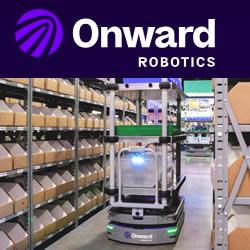RaaS Revolution: How Robotics-as-a-Service Will Top USD 7 Billion by 2032 — And What It Means for Business
The idea of robots as a distant, futuristic luxury has already been eclipsed. Today, Robotics-as-a-Service (RaaS) is reshaping how companies of every size approach automation: renting robotic capability instead of buying and maintaining expensive, specialized machines. With the RaaS market projected to exceed USD 7 billion by 2032, the model’s momentum is no surprise. It solves capital constraints, accelerates deployment, and makes continuous upgrades part of the service — not the customer’s headache.
The idea of robots as a distant, futuristic luxury has already been eclipsed. Today, Robotics-as-a-Service (RaaS) is reshaping how companies of every size approach automation: renting robotic capability instead of buying and maintaining expensive, specialized machines. With the RaaS market projected to exceed USD 7 billion by 2032, the model's momentum is no surprise. It solves capital constraints, accelerates deployment, and makes continuous upgrades part of the service — not the customer's headache.
Why the subscription model wins
RaaS reframes automation from a one-time capital investment into a predictable operational expense. For small and mid-sized businesses, that matters. Instead of waiting years to amortize a robot's cost and worry about obsolescence, customers pay for outcomes: fulfilled orders, safer warehouses, repeatable inspections, or 24/7 cleaning. This shift removes barriers to entry and widens the addressable market for robotics vendors.
Vendors benefit, too. They secure recurring revenue streams, collect real-world usage data, and can iterate on products rapidly. That feedback loop — product improvements driven by live operational data — is a powerful engine for both reliability and innovation.
Where RaaS is making the biggest dent
Logistics and warehousing are the textbook case: cobots that assist packing lines, autonomous mobile robots (AMRs) that shuttle inventory, and automated sortation systems optimize throughput and reduce human strain. Retailers facing unpredictable seasonal demand often prefer flexible capacity; RaaS lets them scale robotic assistance up or down without buying hardware that will sit idle much of the year.
Healthcare and hospitality are emerging hotspots. Service robots that deliver supplies, disinfect rooms, or provide front-desk assistance reduce exposure risk and free staff to focus on high-value human tasks. In manufacturing, RaaS enables smaller producers to introduce precision automation for quality inspection and repetitive assembly without draining capital.
Key drivers fueling the $7B-plus growth
1. Lower total cost of ownership: Pay-as-you-go pricing and bundled maintenance reduce the effective cost of automation, especially for short-run or seasonal needs.
2. Faster time-to-value: Plug-and-play deployments and remote software updates compress the timeline from purchase decision to measurable gains.
3. Software-defined capabilities: AI, cloud integration, and analytics are bundled into services, turning robotic fleets into continuously improving platforms.
4. Financing and partnerships: RaaS providers often include financing, insurance, and integration support, making it easier for enterprises to adopt automation without building in-house expertise.
5. Labor dynamics: Tight labor markets and rising wages make automation more attractive — not just as a cost-saver, but as a reliability and safety measure.
Business implications — what to plan for now
Adopting RaaS successfully requires thinking beyond the machine. Leaders should treat RaaS as an operational program, not a plug-in purchase. Start by mapping high-frequency, repetitive processes that would benefit from automation. Pilot projects should focus on measurable KPIs — throughput, error rate, worker safety incidents, or cost per unit — so you can benchmark ROI and scale confidently.
Integration is another frontier. The most valuable RaaS deployments are those that play well with existing software: WMS (warehouse management systems), ERP, and scheduling platforms. Ask potential vendors about APIs, data ownership, and how they handle upgrades. Avoid black-box solutions that lock you into a single vendor without exportable data.
Risks and how to manage them
No technology is risk-free. Operational dependency on a third-party provider means businesses must vet vendor stability, service-level commitments, and contingency plans for downtime. Cybersecurity is non-negotiable: robots connected to networks are endpoints that need the same protections as corporate servers. Finally, the human factor matters — workers will need new skills to operate, supervise, and collaborate with robotic colleagues. Investing in retraining and change management pays dividends.
What this growth means for the workforce
RaaS does not spell wholesale job loss; instead, it reshuffles work. Repetitive, hazardous tasks are automated, while roles that require judgment, creativity, and problem-solving gain importance. Organizations that pair RaaS adoption with reskilling programs will find it easier to retain institutional knowledge, improve morale, and capture productivity benefits.
Looking ahead: modular, interoperable, and intelligent
The most compelling RaaS offerings of the next decade will be modular and interoperable. Rather than monolithic robots that solve one problem, flexible fleets of interoperable units — combined with modular software subscriptions — will let businesses compose solutions tailored to local processes. Add continual learning through edge AI and cloud orchestration, and fleets will grow smarter, safer, and more efficient over time.
Conclusion
Surpassing USD 7 billion by 2032 is not just a financial milestone; it's an indicator that automation is becoming accessible, flexible, and strategic. RaaS frees companies from the constraints of capital expenditure, reduces the friction of adoption, and aligns incentives between vendor and customer through outcome-based contracts. For businesses ready to experiment, the time to pilot a RaaS solution is now — but do it with clear metrics, strong vendor contracts, and a plan to integrate people, processes, and technology. The robots aren't coming; they're already here — and RaaS makes them affordable allies for the next wave of productivity.
Source: https://www.gminsights.com/industry-analysis/robotics-as-a-service-market
Featured Product

